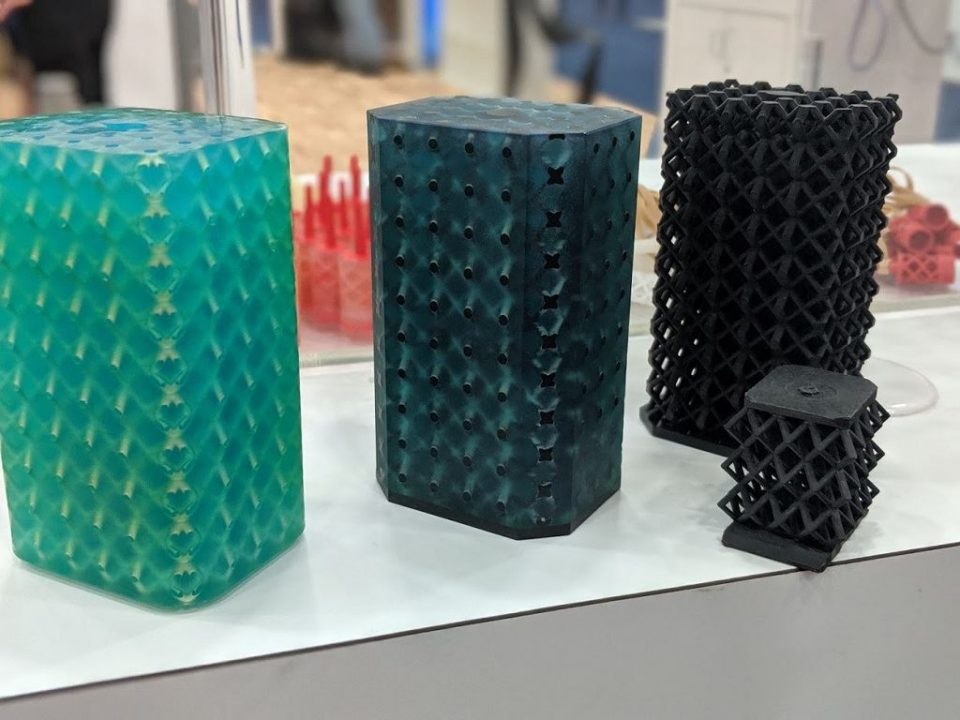“It’s kind of basic,” says AddiFab Inc. CEO Carsten Jarfelt, “we combine the freedom of 3D printing with the known, credible, repeatable benefits of injection molding.”
AddiFab recently emerged from stealth with its Freeform Injection Molding (FIM) technology, offering an interesting business proposition that effectively brings together the best of two worlds in manufacturing.
3D printing has gained accolades for its “freedom of design” (a bit of an overstatement, but the sentiment is accurate enough for a blanket descriptor). The complex geometries enabled by additive manufacturing, by building up a part rather than removing material to shape and excavate one, offer new capabilities to old design needs. Part consolidation, lightweighting, artistic vision: the benefits are many, and broadly applicable.
What 3D printing doesn’t offer at this point, though, is broad scalability. Volume manufacturing, when we get into the hundreds of thousands or millions of parts, is simply not yet competitive with traditional means of making like injection molding. With injection molding, molds are filled and refilled to quickly and reliably create thousands or millions of exactly the same thing. Once the molds are made, the process is pretty cheap, it’s fast, and it’s common. It’s also unhindered by the material considerations that still hold 3D printing back, as traditional materials were formulated for this already.
3D printing molds is a major application area already. But what about when those molds can all be highly detailed, can all be complex — can even all be different?
AddiFab proposes to combine these two worlds, offering single-use molds that are themselves 3D printed and then injected with — well, effectively any material.
The 24-person startup is ambitious in its plans, and those ambitions are beginning to pay off.
At the recent RAPID + TCT, the company exhibited alongside collaborator Mitsubishi Chemical. Representatives from both teams were glad to share their experiences alongside plenty of part samples for visitors to get hands-on with the results.
“If you have a design and a material wish, we haven’t seen any material we can’t do,” Jarfelt told me. “We have done about 500 material experiments first-hand, and we see that we can do this material and this material, and these materials in between them.”
AddiFab also had a “BYO” (bring your own) plastics event, to which visitors had brought various materials, including plastic pellets and even recycled fishing nets. Within 15 minutes, they could see 5 different materials be successfully made into parts.
“The materials are nearly unlimited; we ‘only’ have to focus on these molds,” Jarfelt said. “This brings tooling costs down by a factor of five, and time down by 10x. If you had the idea for this big part yesterday, you’d have it in your hand tomorrow. For this small one, you’d have it in six hours.”
The freedoms of materials possible with FIM were what appealed to Mitsubishi, which offers a vast portfolio of polymers, including super-strong metal-replacement types that can create fully isotropic parts.
“That’s the core of what we’re doing: materials,” Jeff Gerbec, PhD, Regional Manager, Technology Strategy, Mitsubishi Chemical America told me. “We have best-in-class in strength-to-weight ratio polymers, and we’re converting these to 3D printing materials. Trying to apply that to 7,000 grades of material is cost-prohibitive, though. Now, here we directly apply materials to additive manufacturing, we can bring in generative design to injection molding, which is not possible. We can apply all these material properties here.”
Mitsubishi Chemical offers materials applicable to a range of uses, from medical to automotive (“all the usual suspects,” Gerbec noted) — including the compliance and certifications to go along with them. Directly taking these exact materials and applying the benefits of additive manufacturing with none of the chemically tricky conversions is an area of major interest here.
“Even though we’ve been a latecomer to 3D printing, and it’s no secret we’ve been a sleeper,” Gerbec continued with a smile, there’s great interest here. “We don’t want to start from scratch.”
The results possible via FIM are comparable to those from standard injection molding processes, with strong batch-to-batch consistency. Jarfelt noted that AddiFab achieved results within 1% of those from Mitsubishi’s injection molding: “The same as is acceptable in an injection molding batch.”
The showing at RAPID was a successful one for AddiFab, building upon what Jarfelt characterizes as a “really successful six months” of business.
“What’s validating is who’s coming to see us — and more, who’s coming back,” Jarfelt said, hinting at big names to come. “People are coming with very good questions already, and they are coming back with further informed questions.”
The conversations at major events like RAPID are one of the undeniable highlights of the event, as major players gather together with an eye out to potential business partners, purchases, customers, and collaborations. And for AddiFab, it seems those conversations were (and will be) fruitful indeed.
Credit: Fabbaloo, Sarah Goehrke
